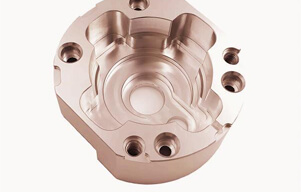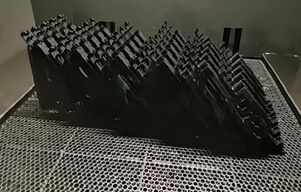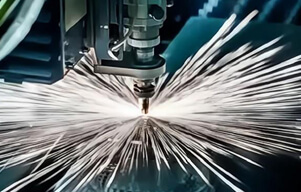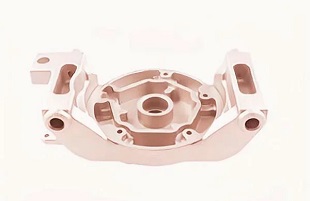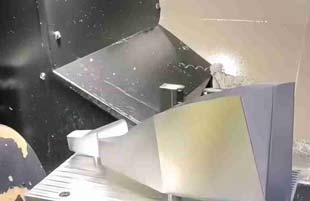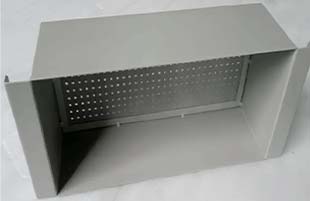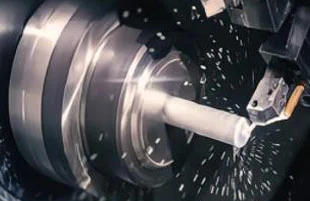As someone deeply entrenched in the world of prototype development, I've witnessed firsthand the transformative impact of the vacuum casting process in our industry. Recognized for its remarkable utility in rapid prototyping, this prototyping technology leverages a meticulous interplay between vacuum forces and castable materials to fabricate precise replicas of original models. Whether through the production of intricate parts for testing or the crafting of low-volume production runs, vacuum casting stands as a testament to the relentless pursuit of manufacturing excellence.
Introduction to Vacuum Casting
China vacuum casting holds a position of importance in the world of manufacturing, particularly for its integration into
industrial applications where precision and detail are paramount. My exploration of this method reveals an increasingly preferred technique for its capability to produce high-resolution, intricate resin castings through the versatility and reliability of silicone moulds. In this introduction, I aim to unpack the essence of vacuum casting and shed light on its rising prominence in creating parts with exceptional surface finishes that meet stringent industrial standards.
The transformative nature of vacuum casting lies in its intelligent use of technology to harness the intricacies of original models. This is achieved by creating detailed replicas that are not only visually and functionally equivalent but are also produced with a swift turnaround time. These characteristics are especially crucial when the process is applied to sectors requiring bespoke components, from automotive to healthcare. In these contexts, the tactful application of vacuum casting can significantly streamline the production line.
"Vacuum casting stands as a testament to the synergy between innovation and practicality, offering a bridge from concept to reality that few manufacturing processes can."
Now, let us delve into the reasons why vacuum casting is reaching its zenith in modern manufacturing environments:
Silicone moulds guarantee a high level of detail and fidelity to original designs, which is essential for complex applications.
The quality of resin casting derived from vacuum casting is often unparalleled, featuring superior durability and finish.
Across industrial applications, vacuum casting is hailed for its adaptability, notably in producing prototypes and end-use parts with fine-tuned precision.
In the ensuing sections, I will further navigate through the multifaceted landscape of vacuum casting, giving you a thorough comprehension of how this technology is revolutionizing the making of prototypes and final products alike.
What is Vacuum Casting?
Delving into the realm of advanced manufacturing, I find vacuum casting to be a compelling process that merges the precision of modern technology with the fundamentals of physics. How does vacuum casting work? It's quite fascinating. This intricate procedure utilizes the principles of suction and atmospheric pressure, seamlessly filling silicone moulds with a selection of materials. The purpose: to replicate the design of a master model with incredible accuracy.
The Basics of Vacuum Casting Technology
Vacuum casting stands out in the sphere of production for its ability to mirror an original piece with stellar fidelity. The cornerstone of this method lies in its use of silicone moulds, which are known for their flexibility and resilience. These moulds serve as the perfect negative of a prototype, ready to be filled with various materials, most notably polyurethane and thermosetting resins. It's the interplay between the vacuum – skillfully generated by a casting vacuum machine – and atmospheric pressure that allows the material to perfectly occupy every crevice of the mould, setting the stage for an immaculate final product.
Core Steps in the Vacuum Casting Workflow
Understanding the vacuum casting workflow is imperative for anyone interested in this technology, whether for professional or educational purposes. It commences with the creation of a master model, which nowadays is typically accomplished using 3D printing. The precision of 3D printing lays a solid foundation for the subsequent steps. What follows is a meticulous process where silicone moulds are crafted from the master, ensuring every detail is captured down to the finest feature. A special resin mix is then prepared, considering the desired properties of the final output. Once the concoction is ready, it's carefully poured into the mould. This is where the magic happens – as the casting vacuum machine springs into action, it expels air from the mould cavity, enticing the resin to occupy the space, faithfully assuming the shape of the master model. After a precise curing period, the new part is demoulded, revealing a high-quality replica, primed for use.
Vacuum Casting vs Vacuum Forming: Key Distinctions
In the realm of manufacturing and prototyping, two processes often come into comparison due to their similar names but differing methodologies: vacuum casting and vacuum forming. While both leverage a vacuum to mold materials into precise shapes, the fundamental differences lie in the techniques, materials used, and the applications they serve. Understanding the key distinctions between these methods is essential when making decisions about production techniques, as my insights are rooted in the priorities around material properties and the objectives of the production run.
Vacuum casting, on one hand, is synonymous with its use of silicone molds and liquid resins, allowing for intricate designs and a high level of detail. On the other hand, vacuum forming is recognized by its thermal shaping of thermoplastic sheets over a mold. To offer a deeper look into these differences, I have compiled a comparative analysis focusing on various aspects that influence the choice between vacuum casting and vacuum forming:
| Aspect | Vacuum Casting | Vacuum Forming |
|---|
| Materials Used | Liquid resins poured into silicone molds. | Thermoplastic sheets heated and shaped. |
| Material Properties | Materials can mimic a wide range of properties including rigid, flexible, clear, or colored. | Limited to the innate properties of the thermoplastic sheet used. |
| Process | Resin is drawn into the mold by a vacuum. | Thermoplastic sheet is drawn over the mold by both vacuum and heat. |
| Design Complexity | Suitable for complex, detailed, and intricate designs. | Best for simpler designs and uniform wall thicknesses. |
| Production Volume | Ideal for small to medium runs due to the reusability of silicone molds. | Geared towards medium to high-volume production due to the efficiency of the process. |
To illustrate, consider the scenario where an engineer must decide on a method for creating high-detail prototypes with undercuts and varying wall thicknesses. Here, vacuum casting would be the process of choice due to its capacity for complexity and high-quality finish. Conversely, if the task calls for the economic production of large quantities with consistent wall thickness, the engineer might incline towards vacuum forming.
Ultimately, as I dissect the nuances of vacuum casting vs vacuum forming, it becomes evident that the decision matrix pivots on the axis of design intricacy, intended use, and the scale of production. Each method has its arena of excellence, honed to accommodate specific industrial needs and product aspirations.
Capabilities of Casting Vacuum Machines
As an essential component in the world of prototyping and small-batch production, casting vacuum machines are lauded for their ability to produce high-precision and consistent parts. When I delve into the intricacies of these machines, it becomes evident that their capabilities are directly influenced by their technical specifications, such as chamber size, the vacuum power available, and temperature control systems. These specifications are crucial, particularly when working with versatile materials such as urethane resins, renowned for their durability and high-quality finishes.
Understanding Machine Specifications and Requirements
To truly appreciate how a casting vacuum machine operates, one needs to understand its array of specifications and their impact on production. From the dimension of the casting chamber, which dictates the maximum size of parts that can be produced, to the strength of the vacuum pump, which must be powerful enough to evacuate air bubbles from the viscous resins, each aspect is critical. Furthermore, precise temperature controls are vital for ensuring that urethane resins cure adequately, securing the mechanical properties required for the final product.
How Does Casting Work in Modern Vacuum Machines?
The question of 'how does vacuum casting work' opens up a fascinating dialogue on the convergence of traditional craftsmanship and modern automation. Contemporary casting vacuum machines leverage advanced sensors and control systems to fine-tune the entire process. This meticulous regulation is the linchpin for achieving parts with exceptional dimensional accuracy and surface quality. It's a harmonious blend of machine precision and the fluid characteristics of urethane resins that culminates in the flawless replication of prototypes or end-use parts.
Thermoplastics and Urethane Resins in Vacuum Casting
When we delve into the domain of vacuum casting, understanding the difference between thermoplastics and urethane resins becomes paramount. Although thermoplastics are traditionally used in vacuum forming methods, vacuum casting utilizes two-part polyurethane resins extensively. This is largely due to their exceptional ability to imitate various qualities of thermoplastics, tailored to the specifics of the project at hand.
The specialty of urethane resins lies in their versatile nature. These resins come in a vast array of formulations, each offering distinct mechanical and thermal properties that can be closely matched to their thermoplastic counterparts. For instance, urethane resins can be created to simulate the rigidity of ABS or the flexibility of softer plastics like polypropylene. Consequently, when selected thoughtfully for the vacuum casting process, they can result in finished parts that not only look but also behave like thermoplastic materials.
Furthermore, aesthetics play a significant role in the selection of urethane resins. The final surface finish, color, and texture are aspects that cannot be overlooked, as they contribute to the final product's marketability and functionality. By carefully choosing the appropriate type of urethane resin, manufacturers can achieve a wide palette of visual and tactile finishes, ranging from high-gloss to matte and textured surfaces commonly seen in consumer products.
Let's consider the factors that make urethane resins a preferred choice for many practitioners of vacuum casting:
Durability: Their robustness makes them ideal for functional end-use components.
Versatility: The ability to mimic multiple thermoplastic properties creates a broader application scope.
Finish Quality: They achieve excellent surface finishes that require minimal post-processing.
Customization: Color, transparency, and texture can all be tailored to the specified requirements.
In summary, the vacuum casting process, with its use of urethane resins, is a powerful technique that offers manufacturers the flexibility and precision needed to create high-quality prototypes and low-volume production parts. My deep dive into the niche of thermoplastics and urethane resins in vacuum casting reveals that the possibilities are indeed extensive, varied, and apt for revolutionizing the way products are brought from concept to reality.
Vacuum Casting Advantages and Disadvantages
As an integral aspect of rapid prototyping and low-volume production, vacuum casting stands out for its ability to seamlessly create parts with intricate designs and excellent finishes using silicone moulds. Here, I delve into the comprehensive overview of the benefits and considerations associated with this technique to help you make an informed decision for your manufacturing needs.
Pros of Vacuum Casting for Prototyping and Production
The merits of vacuum casting are manifold, particularly when it comes to the prototyping phase of product development. It's known for its exceptional reproduction accuracy, which is critical when creating models with complex geometries. The surface finish quality procured through this method is often superior, and that makes it highly favorable for presentations or functional testing, where aesthetic and tactile properties are crucial. Additionally, the process is highly valued for low-volume production runs, allowing for a cost-effective solution to produce a small quantity of parts without compromising on quality.
Cons to Consider Before Choosing Vacuum Casting
Despite its numerous advantages, vacuum casting also presents some drawbacks that are important to consider. Firstly, silicone moulds, albeit versatile, have a limited lifespan and tend to degrade after multiple uses. This means that for longer production runs, the moulds will need to be replaced, potentially increasing the total cost and time of the project. Moreover, there are material restrictions, since not all resins can be used in vacuum casting, and this could limit the applicability of the process depending on the project requirements. Another critical aspect to bear in mind is the initial setup costs, which may influence the overall feasibility of the project, particularly if the end goal is high-volume production.
| Advantage | Disadvantage |
|---|
| High-fidelity reproduction | Limited lifespan of silicone moulds |
| Superior surface finish | Material limitations |
| Ideal for low-volume production | Initial setup costs |
| Flexible silicone moulds accommodate complex geometries | Not suitable for high-volume production without additional costs |
Combining 3D Printing with Vacuum Casting
The fusion of 3D printing and the vacuum casting process stands at the forefront of modern prototyping technology. I have observed how this alliance streamlines the transition from concept to physical form, providing unparalleled efficiency and precision. In my professional experience, utilizing 3D printed master patterns for subsequent vacuum casting has become a standard practice within the industry.
My exploration into this hybrid technique has revealed that its strength lies in the capability to produce prototypes at an expedited rate. This rapid prototyping allows me, and others in the field, to perform iterative design enhancements with minimal delays. The two methods in tandem cater to various industries that demand fast turnaround times for creating prototypes that meet exacting accuracy and detail.
Efficiency in Prototyping: Leveraging 3D printing to create initial models reduces preparation time significantly.
Accuracy and Detail: Master patterns produced by 3D printers ensure that the vacuum casting outputs are a precise replica with exceptional surface quality.
Quick Iterations: Changes can be swiftly implemented in the digital model and instantly reflected in new casts.
In my professional capacity, I've been consistently impressed by how these technologies synergize to refine the prototyping process. As an observer and participant in this evolving field, I can affirm that the integration of 3D printing with vacuum casting represents a significant leap forward in prototype development. It is a testament to the constant evolution of prototyping technology and its pivotal role in driving innovation.
Industrial Applications Using Vacuum Casting
The vacuum casting process plays a pivotal role in the advancement of various industry sectors. The ability to rapidly prototype designs has revolutionized how companies approach product development and manufacturing. With its precision and versatility, vacuum casting serves as a cornerstone for creating high-quality components in a myriad of fields.
Use Cases in Automotive, Medical, and Consumer Goods
In the automotive sector, vacuum casting is instrumental in producing complex, detailed parts such as dashboard components, lighting casings, and interior switches. The medical industry benefits from this technology by obtaining perfectly replicated, high-grade equipment parts that adhere to stringent health and safety standards. Likewise, consumer goods take advantage of vacuum casting for both aesthetic appeal and functionality in products ranging from electronics to home appliances.
Custom Solutions through Vacuum Cast Prototypes
The flexibility of vacuum casting allows for the creation of custom solutions that meet specific needs. This adaptability is essential for industries that require unique designs, which can be achieved without the hefty investment usually associated with custom manufacturing. Quick lead times combined with the economically sound nature of vacuum casting enable rapid iteration and development, thereby reducing costs and increasing efficiency.
| Industry | Application | Benefits of Vacuum Casting |
|---|
| Automotive | Prototype and End-use Parts | High level of detail and fast production for testing and end-user evaluation. |
| Medical | Specialized Equipment | Compliance with stringent health standards and duplication of complex geometries. |
| Consumer Goods | Product Casings and Components | Superior surface finish and fast turnaround for market responsiveness. |
The myriad industrial applications of vacuum casting underscore its integral role in sectors ranging from automotive to medical, and consumer goods. As a cherished manufacturing process, companies continue to leverage vacuum casting for its unmatched ability to produce high-fidelity, cost-effective prototypes and parts that go beyond the confines of traditional production methods.
Dimensional Accuracy and Surface Finish in Vacuum Casting
In my experience as a journalist covering manufacturing technologies, I've found that dimensional accuracy and surface finish are crucial benchmarks in the vacuum casting process. This process is lauded for its ability to replicate intricate details with precision reminiscent of the original master model.
Why are these factors so vital? Consider this: even the most artfully designed component can fail to fit or function within its intended assembly if the dimensions are off by mere millimeters or if the surface finish is substandard. That's why, when I examine the vacuum casting process, my attention zeroes in on the rigor applied to maintain these qualities, reflecting the commitment to excellence in the final product.
The surface finish in vacuum casting requires attention to detail, ensuring that each part boasts a flawless facade that rivals conventional production methods.
Dimensional accuracy, on the other hand, is equally critical; it lies at the heart of functional prototypes and end-use components, dictating their successful integration in both simple and complex assemblies.
From an industry perspective, these facets of vacuum casting make it exceptionally appealing for applications where the aesthetic appeal must harmonize with precise functional specifications. End-users benefit not just from the product's seamless look but from its impeccable fit and utility, validating vacuum casting as a trusted ally in rapid prototyping and beyond.
The vacuum casting process stands out for producing parts with such fidelity that they may be deemed virtually indiscernible from their originating models. It's no wonder that sectors demanding high-precision components consistently turn to this process.
Optimizing Low-Volume Production with Vacuum Casting
As a professional vacuum casting factory in the field of manufacturing, We constantly explore ways to optimize production processes. Vacuum casting brings significant advantages to low-volume production. This method aligns perfectly with scenarios demanding rapid prototyping and high-quality output, without leading to a skyrocketing budget. The inherent flexibility of vacuum casting allows for prompt design modifications, which is instrumental when adapting to evolving market trends or client feedback.
One of the key merits of utilizing vacuum casting for low-volume production is the reduction of waste. This consideration is not only economically beneficial but also environmentally responsible. By ensuring that we are producing only what is needed, vacuum casting stands as a paragon for sustainable manufacturing in our industry.
Adopting vacuum casting means embracing the capacity to pivot swiftly and refine products, which is essential in today's fast-paced market where consumer preferences evolve rapidly.
Here’s a detailed comparison underscoring the distinct strengths of vacuum casting when deployed for low-volume production versus traditional manufacturing methods:
| Criterion | Vacuum Casting | Traditional Manufacturing |
|---|
| Setup Cost | Lower | Higher |
| Lead Time | Rapid | Longer |
| Flexibility | High (easy design changes) | Low (costly modifications) |
| Material Waste | Minimal | Can be substantial |
| Suitability for Custom Orders | Excellent | Varies |
Ultimately, for professionals like myself, striving to deliver exceptional value in low-volume production, the advantages of vacuum casting simply cannot be overlooked. It empowers us to produce with precision, speed, and financial prudence—all vital factors for staying competitive and satisfying the stringent demands of niche markets.
Material Properties and Their Impact on Vacuum Casting
In my encounter with the vacuum casting process, I've learned that materials are more than substances to be molded; they shape the outcome of our casting endeavors in profound ways. Urethane resins stand out in the spectrum of materials, given their incredible versatility and ability to be tailored to meet stringent requirements. When I approach a vacuum casting project, my first consideration is to ensure that the chosen resin casting material aligns with the application's demands, including expectations for durability, thermal resistance, and visual appeal. These material properties are not mere specifications—they are the bedrock of the functional and aesthetic quality of the end product.
Choosing the Right Resin for the Job
Selecting the right urethane resin for a project is not a choice to be made lightly. This decision influences not just the success of the prototype but can also determine the viability of the final product. Each urethane resin variant comes with its own set of material properties that can significantly sway the practicality and longevity of vacuum casted items. My role often involves extensive collaboration with engineers and designers to match the resin properties with the envisioned use, whether it's for industrial components or consumer products, ensuring that every element from resilience to color consistency is accounted for.
How Material Selection Influences Final Product Quality
Perchance, the true prowess of the vacuum casting process becomes palpable in the way material selection interplays with product quality. A resin that deftly handles wear and tear or one that stands stalwart in the face of extreme temperatures can be the cornerstone of a product's market success. My advice springs from detailed analysis—weighing intended usage against environmental factors and regulatory mandates. In tandem with these considerations, I advocate for a comprehensive understanding of how each resin reacts within the vacuum casting environment to preempt any challenges that might compromise the product's integrity and performance.
FAQ
What is the vacuum casting process?
The vacuum casting process is a versatile prototyping technology that utilizes a vacuum to draw liquid materials such as polyurethane and thermosetting resins into a silicone mould. This process is known for its speed and cost-effectiveness in producing high-quality duplicates from an original master model, and is frequently used for testing, validation, or low-volume production.
How does the vacuum casting process differ from vacuum forming?
While vacuum casting involves pulling liquid resin into a silicone mould under vacuum, vacuum forming uses heat and suction to shape thermoplastic sheets over a mould. The choice between these two processes depends on the desired material properties, design complexity, and production volume.
What are the advantages of vacuum casting?
Vacuum casting offers numerous advantages, particularly in prototyping and low-volume production. It allows for high-fidelity reproduction of models, including those with complex geometries, and delivers a high-quality surface finish. The flexibility of silicone moulds makes it suitable for producing multiple iterations of a design with relative ease.
Are there any disadvantages to using vacuum casting?
Despite its benefits, vacuum casting does present some challenges. The lifespan of silicone moulds is limited, which may not be ideal for high-volume productions. There are also material limitations to consider, and the initial setup costs can be significant, potentially affecting the feasibility of a project.
Can 3D printing be combined with vacuum casting?
Yes, 3D printing is often combined with vacuum casting, especially in the prototyping phase. 3D printed models can serve as the master patterns for creating silicone moulds in the vacuum casting process, facilitating rapid iterations and refinements of prototypes. This hybrid approach is ideal for industries that require quick turnaround times for highly accurate prototypes.
What industries benefit from vacuum casting?
Numerous industries benefit from vacuum casting, including automotive, where it is used to create parts like dashboard components; the medical sector, for specialized equipment; and the consumer goods industry, for aesthetic and functional prototypes. Vacuum casting provides custom solutions with quick lead times and reduced costs compared to traditional manufacturing.
How important are dimensional accuracy and surface finish in vacuum casting?
Dimensional accuracy and surface finish are critically important in vacuum casting. The process is capable of reproducing highly detailed parts that are close to the original master model. These characteristics are particularly desirable for end-use parts and prototypes where aesthetics and precise dimensions are crucial.
What is the role of thermoplastics and urethane resins in vacuum casting?
In vacuum casting, urethane resins are predominantly used for their versatility and ability to mimic a wide range of material properties, including those of thermoplastics. The selection of urethane resins for a project is dependent on the desired mechanical, thermal, and aesthetic characteristics of the final product.
How do material properties impact the vacuum casting process?
Material properties are fundamental to the success of the vacuum casting process, as they dictate the durability, thermal resistance, appearance, and overall performance of the final product. Urethane resins offer a broad spectrum of properties to cater to various applications, and the right resin selection is essential to meet the specific needs of a project, taking into account factors like intended use and environmental conditions.
How does vacuum casting optimize low-volume production?
Vacuum casting is particularly effective for low-volume production as it balances the demand for high-quality parts with cost-efficiency. It enables the production of small quantities with minimal waste, flexibility for design alterations without significant financial hurdles, and the ability to cater to custom orders, conduct market testing, or produce niche products.
What machines are used in vacuum casting?
Casting vacuum machines are used to perform the vacuum casting process, which are crucial for ensuring the precision and consistency of the end products. These machines are designed with specific dimensions, vacuum strengths, and temperature controls that allow for effective use of materials like urethane resins, ensuring dimensional accuracy and high-quality surface finishes for the cast parts.

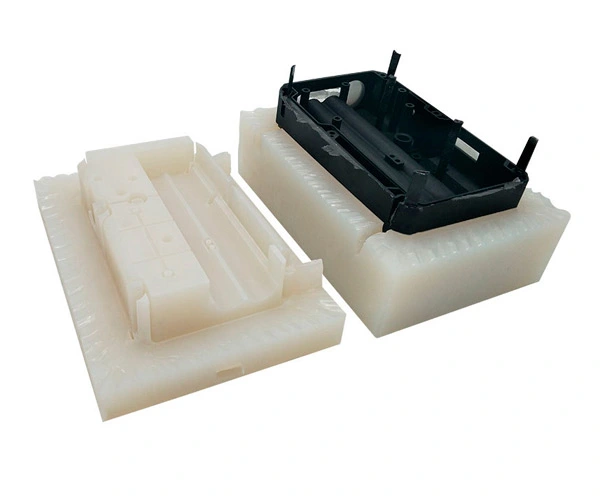
 EN
EN
 ja
ja  ko
ko  fr
fr  de
de  es
es  it
it  pt
pt  ar
ar  tr
tr  iw
iw 